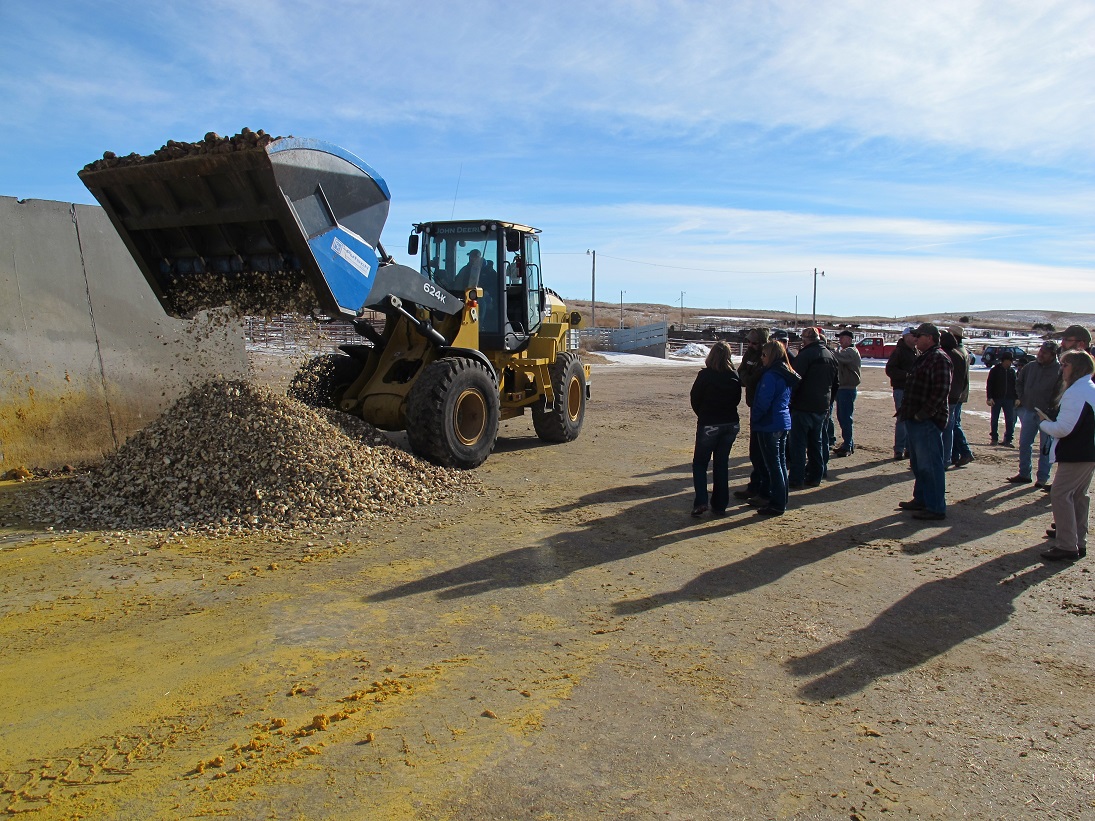
Karla Jenkins, NE Extension Cow/Calf, Range Management Specialist
Sugar beet pulp has historically been a great energy source for supplementing beef cows and growing calves (for more information on using sugar beet pulp in limit fed cow diets see NebGuide G2239 http://extensionpublications.unl.edu/assets/pdf/g2239.pdf). It is usually available October through February for those who sign contracts with the sugar factory by April.
More recently, there has been increasing interest in feeding whole sugar beets in beef cattle rations. The dairy industry in southern climates is finding raising sugar beets to supply energy in dairy diets is more cost effective than raising corn or shipping corn to those regions. Moreover, milk production and milk fat have been increased when whole sugar beets replace some of the corn.
In regions where sugar beets are grown for sugar, there is interest in feeding whole sugar beets to beef cattle when those beets are not needed or do not meet the standards for manufacturing sugar for human consumption. Determining the value of feed beets in beef cattle rations can give beef producers another option for an energy source while providing a marketing outlet for sugar beet producers when the beets are not sold for sugar.
One of the biggest obstacles and concerns about feeding whole sugar beets is getting the beets chopped up small enough to prevent choking hazards for the cattle, particularly if the beets are to be fed fresh with no ensiling, which softens the beets and enhances chewing.
A demonstration sponsored by Betaseed was held at the Panhandle Research and Extension feedlot in January featuring the Chipmaster designed by Putsch. The Chipmaster is an attachment for payloaders run by hydraulics that chips the beets for safe consumption.
Last spring, an experiment was conducted comparing whole beets to corn in high energy, limit fed diets for gestating confinement cows. In this particular case, the beets were rejected for sugar production because of storage issues. In the trial to be conducted this spring, whole beets with no degradation issues will be used. The cows were fed for 47 days just prior to calving (Table 1, http://go.unl.edu/gjaq). There were no differences in performance (P < 0.05)(Table 2, http://go.unl.edu/icaz) suggesting chopped whole sugar beets are an acceptable energy source in high energy, limited fed gestating cow diets. The second year of this experiment will begin in April.
Initial results indicate feed beets are an acceptable feed source for beef cows. Development of chopping methods which reduce particle size below choking hazard with minimal labor will greatly enhance the adoption of this crop into beef cattle diets.
To listen to BeefWatch podcasts go to: https://itunes.apple.com/us/podcast/unl-beefwatch/id964198047 or paste http://feeds.feedburner.com/unlbeefwatch into your podcast app.